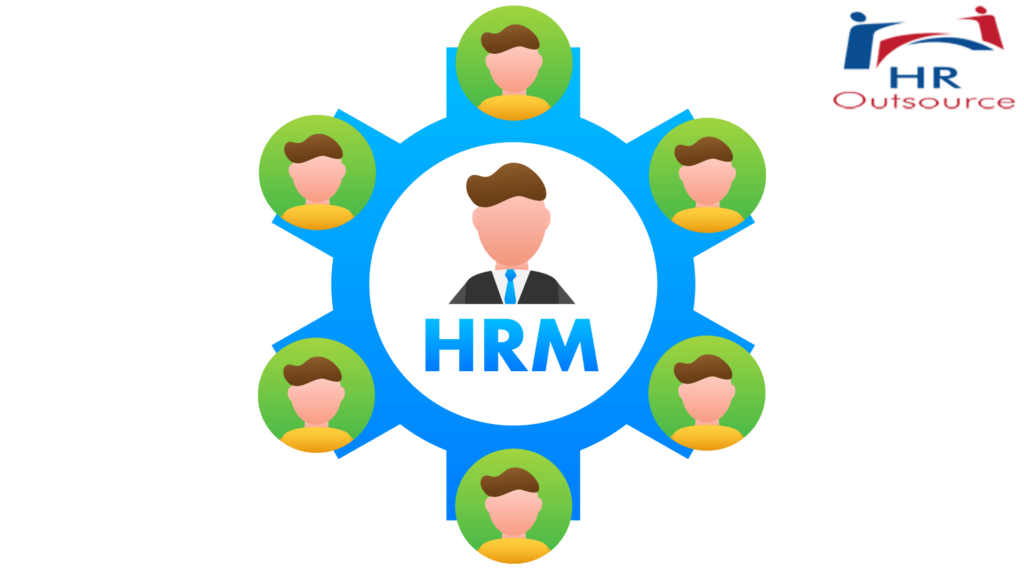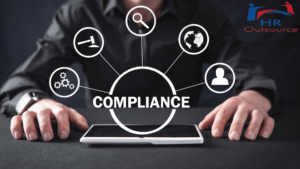Are you curious about the driving forces behind successful organizations? One key element often goes unnoticed yet plays a vital role in shaping the company’s future: Human Resource Management (HRM). In this discussion, we delve into the core of HRM by exploring a fundamental question: What are the 7 roles of human resource management?
Understanding these roles is crucial for anyone interested in the dynamics of effective organizational management. From recruiting the right talent to nurturing their growth and ensuring a harmonious workplace, these roles encompass a broad spectrum of activities that are pivotal in steering a company towards success.
What is Human Resource Management?
Human Resource Management (HRM) is a strategic approach to the effective and efficient management of people in an organization. It aims to help businesses achieve their goals by ensuring the best possible use of their human resources.
This involves a range of activities, including the recruitment, training, and development of employees; overseeing compensation and benefits; managing employee relations; and ensuring compliance with employment laws. HRM focuses on optimizing employee performance and enhancing organizational culture to drive success, productivity, and development. Essentially, it is about managing the workforce in a way that maximizes the potential of both the employees and the organization.
Why are These Roles Important?
Human Resource Management (HRM) is a multifaceted discipline within an organization that focuses on the recruitment, management, and direction of the people who work in it. HRM is the organizational function that deals with issues related to people such as compensation, hiring, performance management, organization development, safety, wellness, benefits, employee motivation, communication, administration, and training.
In essence, HRM is about managing the employee lifecycle effectively – from hiring the right talent, nurturing their skills and career growth, to managing retirement or exit processes. It also encompasses ensuring compliance with employment and labor laws, fostering a positive work environment, and aligning the workforce development with the strategic objectives of the organization.
HRM strategies are designed to maximize employee performance in service of an employer’s strategic objectives and involve overseeing everything related to managing an organization’s human capital.
7 Roles of Human Resource Management

- Recruitment and Selection
- Training and Development
- Performance Management
- Employee Relations
- Compensation and Benefits
- Legal Compliance
- Administration, Payroll & HR Systems
Recruitment and Selection
 The journey of building a strong workforce begins with Recruitment and Selection. This process is not just about filling vacancies but about finding individuals who will contribute positively to the organization’s culture and goals. It’s a strategic alignment of talent acquisition with the long-term objectives of the company.
The journey of building a strong workforce begins with Recruitment and Selection. This process is not just about filling vacancies but about finding individuals who will contribute positively to the organization’s culture and goals. It’s a strategic alignment of talent acquisition with the long-term objectives of the company.
Detailed Process in Recruitment and Selection
- Understanding Role Requirements: Thorough job analysis to determine the exact skills, experience, and personality traits needed.
- Attracting Candidates: Crafting compelling job advertisements, leveraging social media, and participating in job fairs to attract a diverse pool of candidates.
- Robust Screening Methods: Implementing efficient screening processes including resume reviews, preliminary interviews, and aptitude tests to shortlist the best candidates.
- Interview and Selection: Conducting in-depth interviews and assessments to gauge candidates’ suitability for the role and the company culture.
- Onboarding: A well-structured onboarding process to ensure new hires are integrated smoothly into the company.
As we transition from bringing the right people onboard, the focus shifts to their growth and development, underscoring the importance of the next pillar of HRM.
Training and Development
 Training and Development is a continuous journey aimed at enhancing the skills and knowledge of employees. This role is pivotal in ensuring that the workforce is equipped to meet current challenges and adapt to future changes in the industry. It’s about fostering a culture of continuous learning and professional growth.
Training and Development is a continuous journey aimed at enhancing the skills and knowledge of employees. This role is pivotal in ensuring that the workforce is equipped to meet current challenges and adapt to future changes in the industry. It’s about fostering a culture of continuous learning and professional growth.
Comprehensive Approach to Training and Development:
- Gap Analysis: Conducting regular assessments to identify skills or knowledge gaps among employees.
- Customized Training Programs: Developing tailored training initiatives based on identified needs, including leadership development, technical skills training, and soft skills enhancement.
- Diverse Learning Methods: Utilizing various training methods such as workshops, webinars, mentorship programs, and online courses to cater to different learning styles.
- Tracking Progress: Monitoring the effectiveness of training programs through feedback, performance reviews, and measuring the ROI on training initiatives.
This commitment to employee development feeds directly into the next critical aspect of HRM: Performance Management.
Performance Management
 Performance Management is about nurturing and enhancing employee performance in line with the organization’s strategic goals. This role involves setting clear expectations, providing ongoing feedback, and recognizing and rewarding high performance. It’s a critical process for driving employee engagement, satisfaction, and productivity.
Performance Management is about nurturing and enhancing employee performance in line with the organization’s strategic goals. This role involves setting clear expectations, providing ongoing feedback, and recognizing and rewarding high performance. It’s a critical process for driving employee engagement, satisfaction, and productivity.
In-Depth Elements of Performance Management
- Objective Setting: Collaborating with employees to set clear, achievable, and measurable goals.
- Continuous Feedback: Implementing regular check-ins and feedback sessions to discuss progress and areas for improvement.
- Performance Appraisals: Conducting comprehensive annual or bi-annual performance reviews to assess achievements and discuss future goals.
- Career Development: Working with employees to develop career progression plans, identifying opportunities for growth, and providing the necessary support and resources.
Next, we learn about Employee Relations importance, where the focus is on nurturing the human element of the workforce.
Employee Relations
 Employee Relations is not just about resolving conflicts; it’s about creating a culture where employees feel genuinely connected and committed to their work. This area of HRM involves building strong, positive relationships between the employer and employees. It’s about understanding and addressing the needs, concerns, and aspirations of employees to foster a supportive and engaging work environment.
Employee Relations is not just about resolving conflicts; it’s about creating a culture where employees feel genuinely connected and committed to their work. This area of HRM involves building strong, positive relationships between the employer and employees. It’s about understanding and addressing the needs, concerns, and aspirations of employees to foster a supportive and engaging work environment.
Expanding on Employee Relations
- Employee Satisfaction Surveys: Regularly gathering feedback to gauge employee sentiment and identify areas for improvement.
- Diversity and Inclusion Initiatives: Promoting a culture that values diversity and fosters an inclusive work environment.
- Employee Recognition Programs: Acknowledging and celebrating employee achievements and milestones.
As we consider the well-being and satisfaction of employees, Compensation and Benefits come into play as a strategic tool for motivation and retention.
Compensation and Benefits
 Compensation and Benefits go beyond mere salary distribution. It’s a strategic tool that HRM uses to attract, motivate, and retain employees. This role involves designing compensation packages that are not only competitive but also align with the organization’s values and goals.
Compensation and Benefits go beyond mere salary distribution. It’s a strategic tool that HRM uses to attract, motivate, and retain employees. This role involves designing compensation packages that are not only competitive but also align with the organization’s values and goals.
Deep Dive into Compensation and Benefits:
- Total Rewards Strategy: Developing a comprehensive approach that encompasses all aspects of compensation, including base pay, bonuses, and benefits.
- Benefits Administration: Managing and administrating employee benefits programs, including health insurance, retirement plans, and wellness initiatives.
- Pay Equity Analysis: Ensuring fairness and transparency in pay practices to maintain compliance and employee trust.
With these strategies in place, maintaining Legal Compliance becomes paramount to protect the organization and its employees.
Legal Compliance
 Legal Compliance is a critical safeguard in HRM’s arsenal. It involves ensuring that all HR policies and practices are in line with federal, state, and local laws. This role is crucial in protecting the organization against legal risks and maintaining ethical standards in the management of human resources.
Legal Compliance is a critical safeguard in HRM’s arsenal. It involves ensuring that all HR policies and practices are in line with federal, state, and local laws. This role is crucial in protecting the organization against legal risks and maintaining ethical standards in the management of human resources.
Broadening Legal Compliance:
- Employee Handbook Updates: Regularly updating the employee handbook to reflect current laws and regulations.
- Training and Development: Providing training for management and staff on legal compliance issues, such as anti-harassment and discrimination policies.
- Audit and Risk Assessment: Conducting regular audits to assess compliance risks and implementing corrective actions.
Finally, the effective functioning of these HRM roles relies on the efficient management of Administration, Payroll & HR Systems.
Administration, Payroll & HR Systems
 The role of Administration, Payroll & HR Systems is the backbone of the HRM function. It involves managing the logistical and technical aspects of HR operations. This role ensures the smooth functioning of HR processes and systems, which is essential for the efficient management of the workforce.
The role of Administration, Payroll & HR Systems is the backbone of the HRM function. It involves managing the logistical and technical aspects of HR operations. This role ensures the smooth functioning of HR processes and systems, which is essential for the efficient management of the workforce.
Expanding on Administration, Payroll & HR Systems
- Technology Integration: Implementing and managing HR information systems to streamline HR processes.
- Data Security and Privacy: Ensuring the confidentiality and security of employee data.
- Continuous Process Improvement: Regularly reviewing and improving HR Importance of Human Resource Management
Human Resource Management (HRM) is not just a department within an organization; it’s a vital strategy for success. The importance of HRM cannot be overstated as it plays a multifaceted role in shaping the foundation and future of any company. HRM is like the backbone of an organization, ensuring that the right people are in the right places, doing the right things at the right time.
What are the Importance of Human Resource Management
- Talent Acquisition and Retention: HRM is crucial in recruiting skilled individuals who fit the company’s culture and retaining them through effective engagement and development strategies.
- Employee Development: HRM plays a pivotal role in identifying and nurturing the growth potential in employees, providing training and development opportunities that align with organizational goals.
- Performance Management: Through effective HRM, companies can set clear performance expectations, provide consistent feedback, and recognize and reward employees, thus driving productivity and innovation.
- Workplace Culture: HRM is instrumental in cultivating a positive workplace culture that fosters collaboration, inclusivity, and a sense of belonging among employees.
By embracing the strategic importance of HRM, organizations can harness the full potential of their human capital, resulting in increased efficiency, higher employee satisfaction, and, ultimately, improved company performance.
Why is HRM Important in Bangladesh?
In Bangladesh, where the economy is rapidly growing and diversifying, the importance of Human Resource Management (HRM) takes on a unique and vital role. The country’s evolving business landscape, influenced by technological advancements and globalization, makes effective HRM not just beneficial but essential for organizational success.
HRM in the Context of Bangladesh
- Economic Growth and Competition: As Bangladesh’s economy expands, companies face increasing competition. HRM is key in developing a skilled workforce that can drive innovation and maintain a competitive edge.
- Demographic Advantage: With a significant portion of the population being young, HRM plays a critical role in tapping into this youthful workforce, offering training and development to align their skills with industry needs.
- Cultural Integration: Bangladesh’s diverse cultural landscape calls for HRM strategies that promote inclusivity and understanding, thereby enhancing employee relations and productivity.
- Legal Compliance: With evolving labor laws, HRM ensures compliance, thus protecting organizations from legal risks and fostering ethical business practices.
HRM Impact in Bangladesh
| Aspect | Impact of HRM in Bangladesh |
| Talent Management | Aligning workforce skills with industry needs |
| Employee Engagement | Fostering job satisfaction and loyalty |
| Legal and Ethical Compliance | Ensuring adherence to national labor laws |
| Cultural Dynamics | Nurturing a diverse and inclusive work environment |
| Innovation and Growth | Driving business success through strategic HR practices |
Conclusion
In wrapping up our exploration of Human Resource Management (HRM), it’s clear that HRM is not just an organizational function; it’s a strategic partner in any business’s growth and success. From improving employee satisfaction and productivity to ensuring compliance with legal standards, HRM plays a critical role in shaping a company’s future. Particularly in the context of Bangladesh, with its unique economic and cultural landscape, the importance of effective HRM cannot be overstated. It’s a catalyst for leveraging the country’s demographic advantage and driving sustainable business growth.
As businesses continue to evolve and face new challenges, the role of HRM will become even more significant. Companies that recognize and invest in effective HRM strategies are more likely to succeed in the competitive global market. Thus, understanding and implementing robust HRM practices is not just beneficial but essential for any organization looking to thrive in today’s dynamic business environment.
FAQ
Human Resource vs Human Resource Management
Human Resource (HR) refers to the individuals who make up the workforce of an organization. It’s all about the people – their skills, talents, and contributions. On the other hand, Human Resource Management (HRM) is the systematic approach to managing people within an organization. It involves strategies and processes designed to optimize employee performance and ensure that the company’s human capital contributes effectively to achieving business goals.
What is Human Resource?
Human Resource encompasses the people who work for an organization. It’s the collective term for the workforce, including employees at all levels – from entry-level workers to senior executives. Human Resource is the most valuable asset of any organization, as it is the people who drive innovation, productivity, and ultimately, the success of the business.
Why is HRM Important in Bangladesh?
In Bangladesh, HRM is essential due to its rapidly growing economy and diverse workforce. Effective HRM strategies are vital for tapping into the potential of the country’s young population, fostering a skilled and adaptable workforce, ensuring compliance with labor laws, and enhancing organizational productivity. HRM in Bangladesh plays a pivotal role in aligning human resources with the evolving economic and industrial requirements of the country.
What are the Major Problems in Human Resource Management in Bangladesh?
The major challenges in HRM in Bangladesh include:
- Skill Gaps: Addressing the mismatch between the skills available in the workforce and those demanded by the evolving industry.
- Employee Retention: Developing strategies to retain top talent in a competitive job market.
- Compliance with Labor Laws: Keeping up with and adhering to the rapidly changing labor laws and regulations.
- Workforce Diversity: Managing a diverse workforce effectively while fostering an inclusive and harmonious work environment.
- Technological Advancements: Keeping pace with technological changes and integrating them into HR practices.
Addressing these challenges requires innovative HRM strategies tailored to the specific economic and cultural context of Bangladesh.

